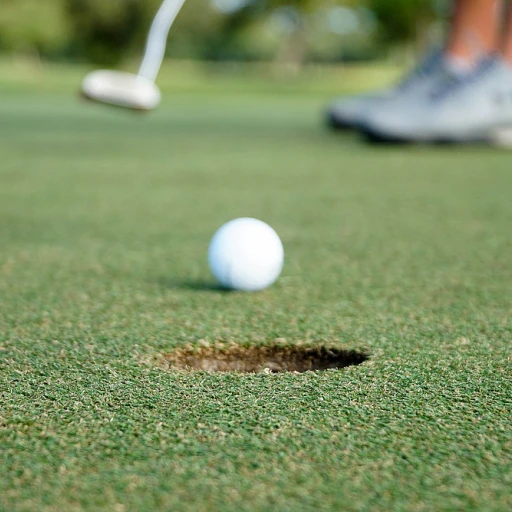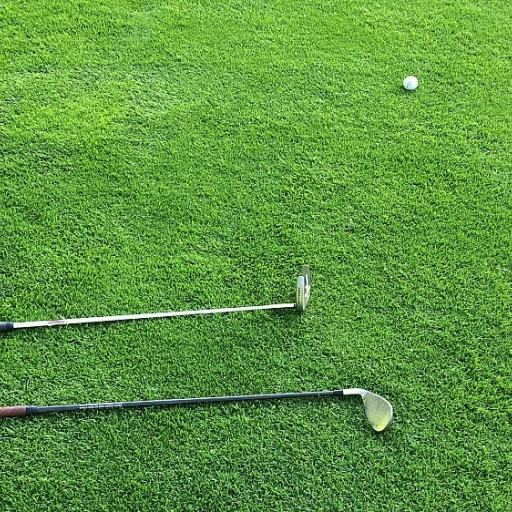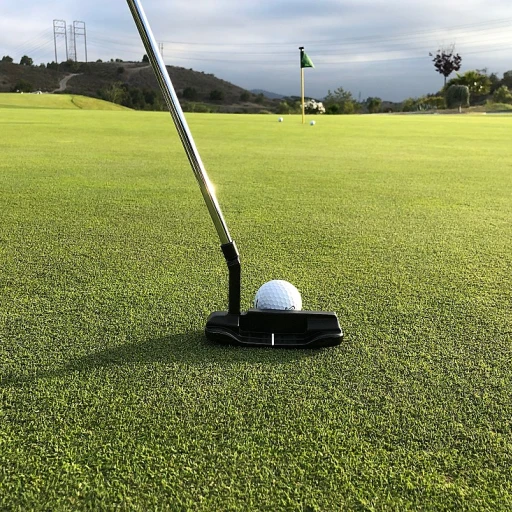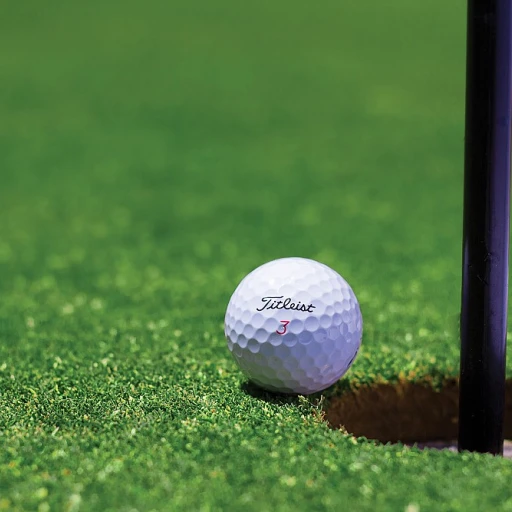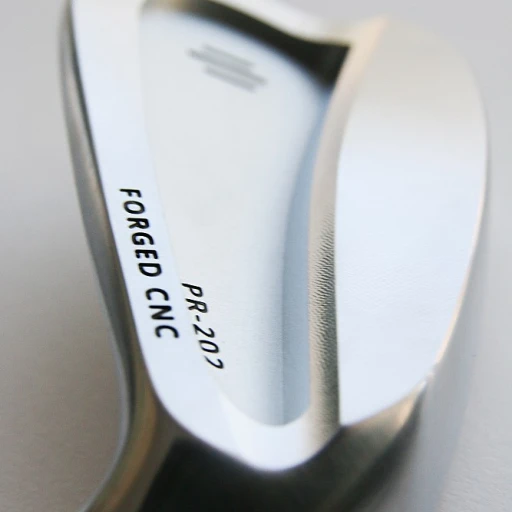
Understanding the term 'scratch golfer'
Defining a scratch golfer
For a lotta folks new to the game, the term 'scratch golfer' migh appear like some kinda secret club. But, in simple terms, a scratch golfer is someone who can play golf at par or better on any course, with a Course Rating around 72.0. Now, par is the scoring standard set by individual holes on a course, and a scratch golfer is expected to hit that mark nearly every time. The United States Golf Association (USGA) standardizes these systems to maintain consistency across courses.
Understanding USGA's role
The USGA is crucial in figuring out what makes someone a scratch golfer. By definition, a scratch golfer has a Course Handicap of zero on all courses rated by the USGA, and this is where the Course Rating and Slope Rating come into play to assess these folks' skills and the course's difficulty. For instance, on a course with a Course Rating of 72 and Slope Rating of 113, a scratch golfer would ideally finish the course in 72 strokes. The USGA equally applies this system to maintain fairness and standardization in golf.
How the term evolved
Historically, the term 'scratch' wasn't just limited to golf. In old school racing, scratch races meant starting from scratch – with no handicap. So, it's kinda similar; scratch golfers are starting at a level playing field with no advantage or handicap.
Precision over power
Click here to explore precision or power in luxury golf. In essence, scratch golfers aren't necessarily the longest hitters. They excel in precision, course management, and mental toughness. That's what separates them from the rest of us weekend warriors.
The skills required to become a scratch golfer
Essential skills for a scratch golfer
Becoming a scratch golfer doesn’t happen overnight. According to the United States Golf Association (USGA), a scratch golfer is someone who can play at a course rating of zero. To reach this, several skills are non-negotiable:
Mastering the short game
The short game is where scratch golfers shine. Golf Digest reports that most strokes can be saved around the greens. They’re proficient in putting, chipping, and bunker shots.
Consistent long game
The ability to hit long, straight drives gives scratch golfers a significant advantage. Top players like Tiger Woods have exceptional driving accuracy. It's about combining strength with precision, ensuring that each drive sets up the next shot perfectly.
Superior iron play
Scratch golfers need to be reliable with their irons. This means hitting the green consistently, especially from 100-150 yards out. Techniques such as club selection and adjusting for wind play crucial roles here.
Reading greens effectively
Reading the slope and grain of the green is essential. Phil Mickelson, known for his impeccable putting, attributes his success to this skill. Scratch golfers spend time during practice rounds understanding the nuances of each green.
Advanced course management
One standout feature of scratch golfers is their ability to manage the course effectively. They strategize, knowing when to take a risk and when to play it safe. This often means playing the percentages and avoiding costly errors.
How course rating and slope rating affect scratch golfers
How course rating and slope rating affect scratch golfers
When diving into golf metrics, understanding how course rating and slope rating affect scratch golfers is vital to comprehending their performance and the challenges they face. Let's break down these concepts and their significance on scratch golfers. course rating explained The course rating, a term you might hear often, reflects the typical score a scratch golfer is expected to achieve on a specific course under normal conditions. Developed by the United States Golf Association (USGA), this rating is a critical benchmark. For instance, if a course has a rating of 72.5, it implies that a scratch golfer is expected to shoot an average of 72.5 strokes. These ratings are pivotal in tournaments and day-to-day game planning. slope rating: the challenge of adaptability Slope rating, on the other hand, measures the relative difficulty of a course for bogey golfers compared to scratch golfers. It's not just about how many strokes over par they hit, but how the difficulty scales. For scratch golfers, a high slope rating means a tougher game. For example, Kiawah Island's Ocean Course has a slope rating of 155, one of the highest in the United States. Such a high slope can challenge scratch golfers to adapt and tweak their strategy. real-world implications Imagine this: three scratch golfers playing the same course, but only one triumphs consistently. Often, it’s due to their understanding and accommodation of the course and slope ratings. Golfers like Phil Mickelson and Tiger Woods have famously adapted their play style based on these ratings. When course and slope ratings are factored in, it results in a more nuanced understanding of their abilities. the USGA’s role in ratings The USGA not only develops these metrics but also revises them periodically based on course changes and player performance data. Their comprehensive approach ensures accuracy and fairness in ratings. This makes practice insightful and goal-oriented for scratch golfers.Challenges in application
However, some golfers argue about the subjectivity involved in rating courses. Different evaluators might produce slight variances. Despite this, the system remains the gold standard. Interested in more on how the game parameters influence golfing performance? Check out our detailed insights on Blue Hill Golf Course: an in-depth look at luxury golfing.Training and practice routines of scratch golfers
Training routines to perfect your golf game
Just like any top-notch athlete, a scratch golfer's path to honing their skills involves rigorous and structured training routines. According to a report from the United States Golf Association (USGA), a significant percentage of dedicated amateur golfers spend an average of 20 hours per week practicing.
Practicing at a high level is essential. A blend of consistency, precision, and versatility is paramount. Take the example of Tiger Woods, who is often cited as a model of relentless practice. As Woods famously said, "No matter how good you get, you can always get better, and that's the exciting part."
The importance of varied practice
To achieve scratch status, it isn't just about hitting balls on the range. Scratch golfers diversify their practice to include full rounds on the course, practicing different shot types, and working on their short game. Data shows that they often spend about 30% of their practice time on putting and another 30% on chip and pitch shots, which together account for over half of their total practice time, emphasizing the importance of the short game in lowering scores.
Take Phil Mickelson, a renowned short game virtuoso. His dedication to chipping and putting drills is well-documented and has significantly contributed to his success and consistency on the course.
Practice facilities and environments
It's not just how much time you spend practicing; where you practice matters too. Scratch golfers often practice at high-quality facilities, including prestigious country clubs. According to a study published by PGA Tour, access to top-tier practice facilities provides golfers with the resources to fine-tune their game under varying conditions, from using different types of sand in bunkers to practicing greens with various grass types and speeds.
The Ocean Course at Kiawah Island is a stellar example. Known for its challenging design and constantly changing wind conditions, it offers golfers a robust training ground to prepare for a diversity of playing conditions, thus improving adaptability.
Technology's role in practice
Technological advancements in golf are game-changing tools for scratch golfers. Many utilize launch monitors like Trackman to analyze and refine their shots, gaining insights into spin rates, launch angles, and carry distances. A survey by the USGA noted that over 70% of scratch golfers use some form of technology to boost their training effectiveness.
The influence of mental training
Beyond physical practice, a scratch golfer's routine often includes mental training. Techniques such as visualization, stress management, and cognitive conditioning are integral parts of their regimen. Noteworthy sports psychologist Dr. Bob Rotella, author of Golf Is Not a Game of Perfect, emphasizes the significance of mental toughness and course strategy.
In sum, becoming a scratch golfer isn't simply about practicing more. It's about practicing smarter, diversifying efforts, leveraging technology, and conditioning the mind. This holistic approach paves the way for achieving and maintaining that revered zero handicap.
The role of golf lessons and coaching
The indispensable role of coaching and golf lessons
When it comes to achieving scratch golfer status, the value of professional golf lessons and coaching can't be overstated. Many scratch golfers lean on their coaches to identify flaws in their swing, improve their short game, and strategize on course management. The insights coaches provide are crucial for fine-tuning every aspect of their game to reach the elite level.
According to a USGA study, 75% of scratch golfers have received formal training. Coaches drill into specific areas needing improvement, using tools like video analysis to give real-time feedback. For example, Butch Harmon, who has coached several top-tier golfers, emphasizes that even tiny tweaks can make a massive difference in performance. As Haley Moore, a USGA amateur champion, notes, “Effective coaching has been pivotal in my transition to a scratch golfer.”
Role of practice in becoming a scratch golfer
Practice routines for scratch golfers are rigorous. Unlike casual players, they dedicate a substantial percentage of their week to practice. According to Golf Digest, scratch golfers typically spend around 20 hours a week practicing, with a heavier focus on short game and putting. The PGA admits that about 65% of practice time should be devoted to shots within 100 yards.
Consider the journey of Phil Mickelson: despite being a pro, he continuously commits extensive time to practice. His chipping routines and putting drills are tailored to replicate various on-course conditions. Scratch golfers often follow a similar structure, combining intense practice sessions with on-course play to hone their skills in real conditions.
Leveraging technology and training aids
The modern era offers a wide array of training aids to help golfers improve. Scratch golfers frequently use devices like launch monitors, swing analyzers, and GPS systems. According to GolfTec, using these aids adds precision to practice, allowing golfers to measure aspects like swing speed, ball trajectory, and distance more accurately.
For instance, TrackMan, a popular launch monitor, provides in-depth analytics that help golfers understand and optimize their swing mechanics. Renowned golf coach David Leadbetter mentions, “Technology like TrackMan has revolutionized the way golfers train. It offers invaluable data that helps golfers make well-informed adjustments to their game.”
Analyzing famous examples
The journey of some famous scratch golfers highlights the role of coaching and practice. Tiger Woods, for example, has always worked with top coaches like Hank Haney and Sean Foley, dedicating countless hours to practice. Similarly, Jordan Spieth often talks about the technical adjustments he made with his coach Cameron McCormick to rise to the top of the game.
Both these golfers leveraged professional coaching and disciplined practice routines, demonstrating that reaching scratch status isn’t about raw talent alone but involves a synergistic blend of dedication, expert guidance, and smart practice strategies. It's evident that reaching and maintaining scratch golfer status requires not just skill but also a strategic investment in professional training and devoted practice time.
Famous scratch golfers and their journeys
Famous scratch golfers and their journeys
Becoming a scratch golfer is a milestone only a few reach in their golfing journey. We're talking about golfers who have not only mastered their craft but also made significant impacts on the sport. Here are some famous scratch golfers and the paths they took to achieve this prestigious status.
Tiger Woods: A prodigious rise
Tiger Woods is perhaps the most well-known name in golf. He started playing golf at a very young age and quickly climbed the ranks. By the age of 20, Tiger had already won the Masters Tournament in 1997. His work ethic, combined with natural talent, set the gold standard for excellence in golf. Tiger's daily routine included meticulous practice, advanced conditioning, and mental coaching, which have become blueprints for aspiring scratch golfers. (Source: Biography.com)
Rory McIlroy's early growth
Rory McIlroy burst onto the scene as a young golfing sensation from Northern Ireland. By the age of 25, Rory had already secured four major championships. His journey to becoming a scratch golfer involved rigorous practice schedules, surrounding himself with expert coaches, and staying focused on the fundamentals of the game. McIlroy's success underscores the importance of continuous improvement and adapting to new techniques and strategies. (Source: PGA Tour)
Phil Mickelson: Persistence pays off
Phil Mickelson, known for his impressive short game and uncanny ability to recover from tricky situations, is another illustrious scratch golfer. Mickelson began his journey as a college golf star at Arizona State University, where he honed his skills and built a reputation as a fierce competitor. His journey to scratch golfer status is a testament to the power of persistence and dedication, with Phil often emphasizing the importance of relentless practice and perseverance. (Source: Golf Digest)
Jordan Spieth: From junior champion to pro
Jordan Spieth's journey in golf started early when he won the U.S. Junior Amateur Championship twice before turning professional. His ascent to scratch golfer status involved a disciplined approach to practice and an analytical look at his game. Spieth's journey highlights the role of early exposure to competitive environments and the importance of continuous self-evaluation and improvement. (Source: Jordan Spieth Official Website)
Lydia Ko: Breaking barriers
Lydia Ko made history as one of the youngest golfers to reach the world's No. 1 ranking. Her journey to scratch golfer status is remarkable for its speed and her ability to stay composed under pressure. From early-age coaching to participating in top junior tournaments, Lydia's path showcases the impact of structured training and mental fortitude. She exemplifies the new wave of young golfers making significant strides in the sport. (Source: Golf Channel)
The stories of these famous scratch golfers illustrate that achieving such a level requires a blend of talent, rigorous training, and unwavering dedication. They offer inspiration and valuable lessons for anyone aiming to join their ranks.




